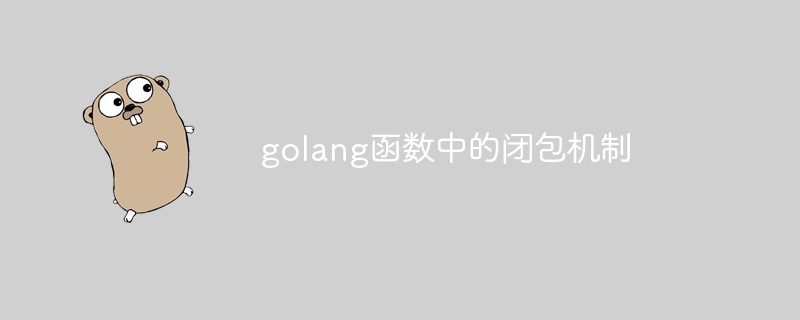
A closure is a function that still retains its scope chain but still exists after the function has finished executing. In Go language, closures can be implemented through anonymous functions and variables, which allow access to variables declared in the outer scope within a function, thus providing a way to encapsulate data and behavior and maintain function state for different scenarios.

Closure mechanism in Go language function
What is closure?
A closure is a function that retains its scope chain after the function is executed. Such functions can access variables declared in the outer scope.
Advantages:
Implementation:
In Go language, closures can be implemented through anonymous functions and variables:
func outer() func() {
x := 10
y := func() {
fmt.Println(x) // 可以访问父函数中的 x
}
return y
}In the above example , the outer function returns an anonymous function y, and y can access the variables x## declared in the parent function outer #.
Practical case:
Calculate the Fibonacci sequence:
func fibonacci() func() int {
a, b := 0, 1
return func() int {
a, b = b, a+b
return a
}
}fibonacci() When returning an anonymous function, it will use closures to retain the previous values a and b, and output the next Fibonacci number.
Note:
The above is the detailed content of Closure mechanism in golang function. For more information, please follow other related articles on the PHP Chinese website!
 How to define variables in golang
How to define variables in golang
 What are the data conversion methods in golang?
What are the data conversion methods in golang?
 What are the commonly used libraries in golang?
What are the commonly used libraries in golang?
 What is the difference between golang and python
What is the difference between golang and python
 Detailed explanation of linux dd command
Detailed explanation of linux dd command
 Is the success rate of railway 12306 standby ticket high?
Is the success rate of railway 12306 standby ticket high?
 What does Apple LTE network mean?
What does Apple LTE network mean?
 number_format usage
number_format usage




